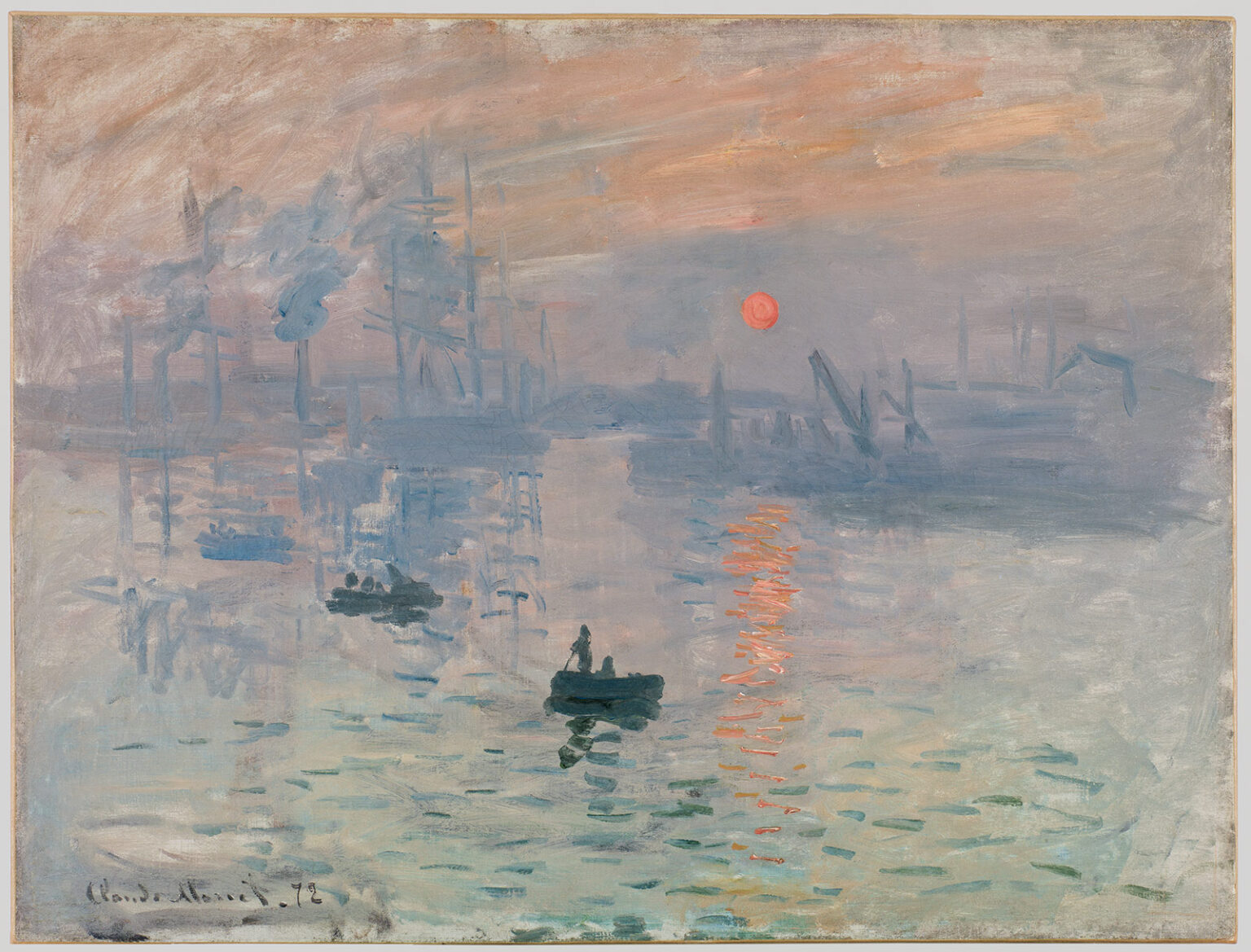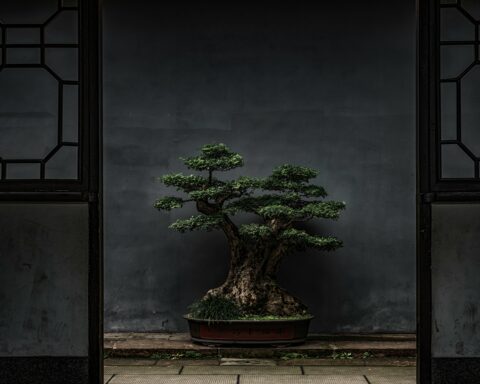Impressionism, a major pictorial movement born in France and extending from the end of the 19th century to the beginning of the 20th, is one of the most popular artistic movements in the history of art. Here we take a look at the characteristics, development and great names of this aesthetic style of painting, which rejected the prevailing academicism.
“Impressionism is both an aesthetic and a movement”. This is how the specialist magazine Beaux Arts describes this movement, driven by a specific artistic atmosphere and a circle of renowned painters. It all began in the early 1860s, when a group of young painters “hungry for independence” banded together to establish a new style of painting, in opposition to academic art deemed too strict.
The characteristics of Impressionist painting
Impressionism is characterised by a juxtaposition of small, rapid, comma-like strokes of paint. The palette of shades is light, to represent the ephemeral nature of light, whose effect on changing colours over the course of a day fascinates artists. These pure tones make it possible to paint light. The shadows are coloured and the contours have little detail, resulting in a sometimes unfinished appearance.
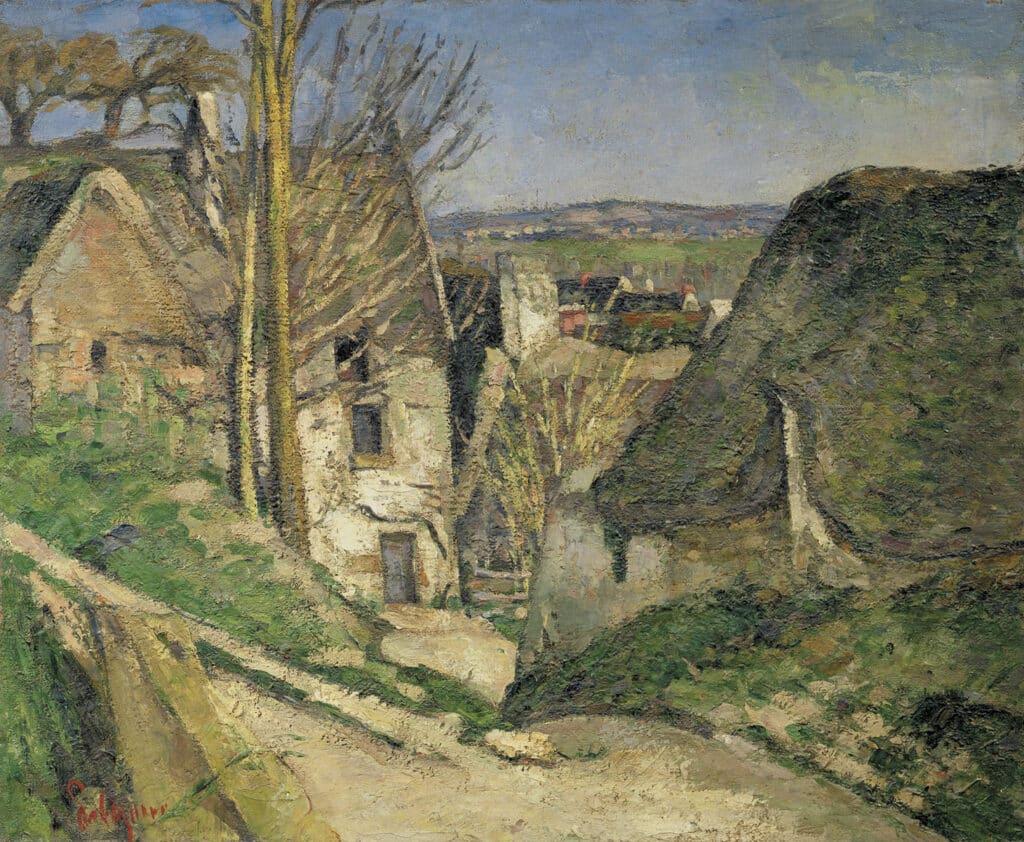
The aim is to reveal the fleetingness of the moment. The artists’ favourite subjects were modern life, landscapes, crowds, leisure activities ranging from balls and ginguettes to cabarets and picnics, and even railway stations and factories. These virtuosos of vivid hues painted everyday scenes, symbols of a new society, contemporary environments and the great outdoors.
The invention of the lighter easel and paint tubes enabled artists to leave their studios and paint outdoors. Paris, the French provinces, Italy, England, Holland… Painters travelled to capture the moment with their brush.
A first exhibition in 1874
Although the public did not immediately embrace the Impressionist movement, rejecting this vision of modern painting, the artists managed to organise a first exhibition in 1874 in the studio of the photographer Nadar, on the fringes of the official Salon, which had rejected their paintings.
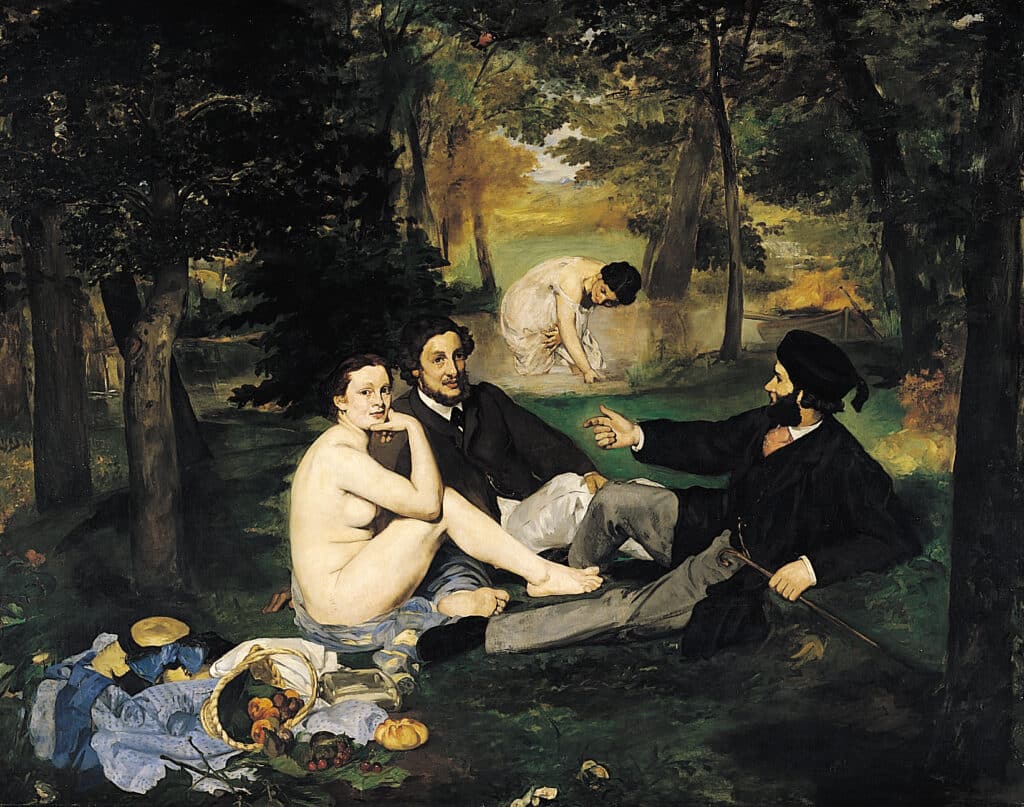
The exhibition brought together around thirty artists, including Berthe Morisot, Eugène Boudin, Paul Cézanne, Edgar Degas, Camille Pissarro, Auguste Renoir, Alfred Sisley and Claude Monet. The leader of the movement, Edouard Manet, whose work Le Déjeuner sur l’herbe in 1863 had caused a scandal in the art world, was not present. This “little clan of rebels” would gather around Manet in the “Batignolles” group.
Claude Monet’s Impression Soleil Levant (1872) gave the movement its name. Anecdotally, the art critic Louis Leroy said he was “impressed” by these paintings, criticising their unfinished nature and relegating them to the status of mere sketches.
Until 1886, the artists mentioned above exhibited together eight times. They were supported by a number of dealers and collectors, such as Gustave Caillebotte and Paul Durand-Ruel, who were betting on Impressionism.
From the 1880s, the movement began to gain acceptance, thanks to critics such as Emile Zola and Léon Gambetta’s new government, which valued its practice. The works were exhibited in museums and at the Salon des Artistes Français, and entered the art market. From then on, the movement was exported outside France, particularly to the United States, and Impressionist schools emerged.
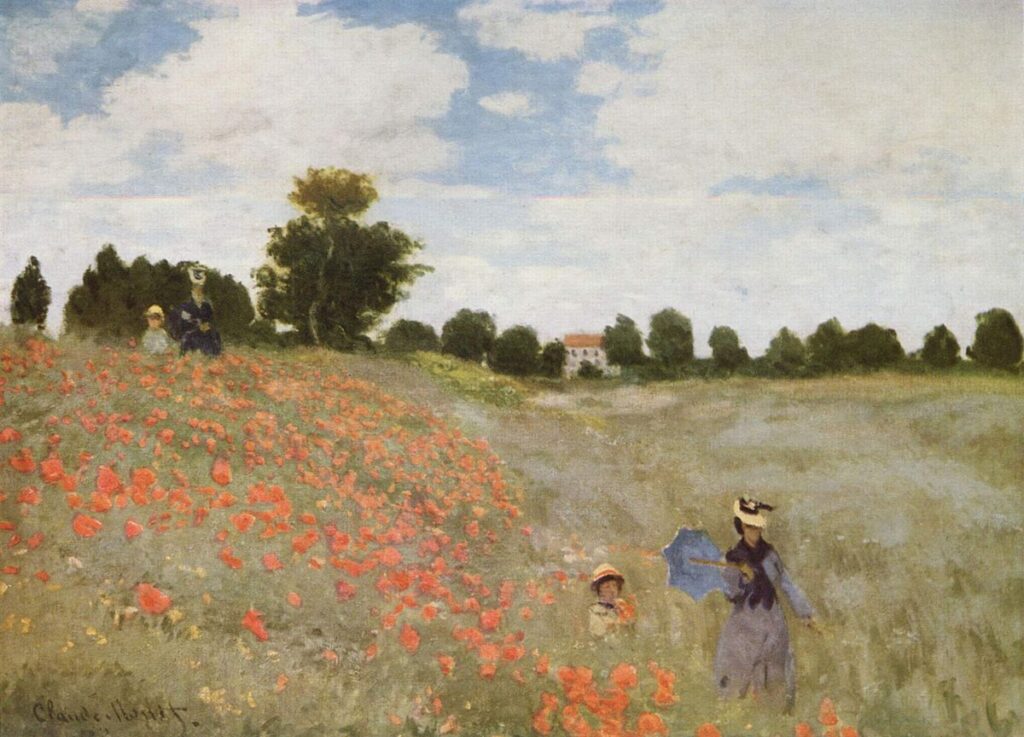
The greatest Impressionist paintings
Claude Monet is a legend of Impressionism. As well as Impression Soleil Levant (1872), his best-known works include Poppies (1873), Lunch (1873), Camille Monet and Child in the Garden (1875), Woman with Parasol Turning to the Right (1886), On the Boat (1887), The Waterlily Basin (1899), The Artist’s Garden at Giverny (1900) and Water Lilies (1904).
Also regarded as one of the founding fathers of Impressionism, Auguste Renoir painted La Grenouillère (1869), Le Bal du Moulin de la Galette (1876), Le Déjeuner des Canotiers (1881) and Les Grandes Baigneuses (1887).
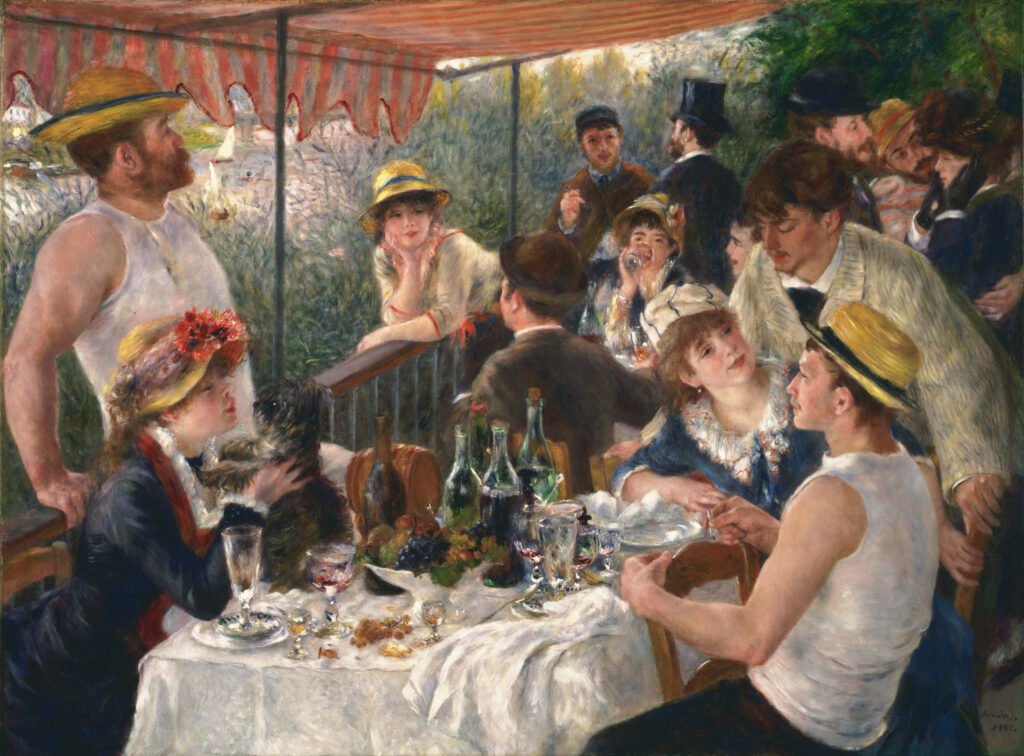
Berthe Morisot painted Le Berceau (1872), Jour d’été (1879) and Femme à sa toilette (1880), while Camille Pissarro painted La Récolte des Foins à Eragny (1887) and La Place du Havre, Effet de pluie (1897).
La Maison du Pendu (1873) and Les Joueurs de Cartes (1892) by Paul Cézanne; Sous la Lampe (1887) by Marie Bracquemond; L’Olympia (1863) by Edouard Manet; La Barque (1893) by Mary Cassatt; La Place du Chenil à Marly, effet de neige (1876) by Alfred Sisley; Jeune Femme aux Pivoines (1870) by Frédéric Bazille; and La Classe de danse (1874) by Edgar Degas are all important works of the movement.
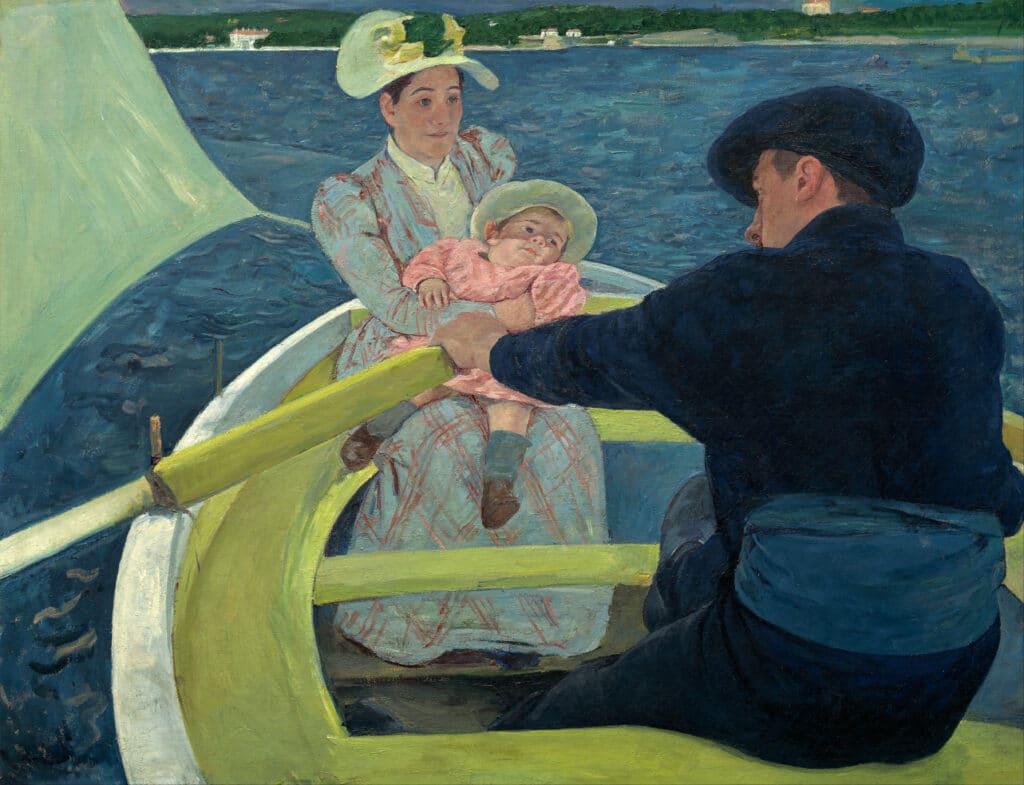
Exhibitions not to be missed
In 2024, 150 years after the first Impressionist exhibition, France is celebrating this artistic heritage. For the occasion, the Musée d’Orsay has loaned 178 works to 34 cultural entities in 13 regions. Rouen, Rome, Orléans, Marseille, Honfleur, Caen, Ajaccio… Major canvases are on show throughout France and beyond.
And until 11 August, the Musée d’Orsay is unveiling the virtual reality exhibition “Un soir avec les impressionnistes Paris 1874”. An immersive experience to appreciate Impressionism in a new way. The Normandie Impressionniste Festival, running until 22 September 2024, is also highly recommended.
Read also : The legacy of Bill Viola, undisputed master of video art
Featured photo: © Impression Soleil Levant (1872) by Claude Monet




